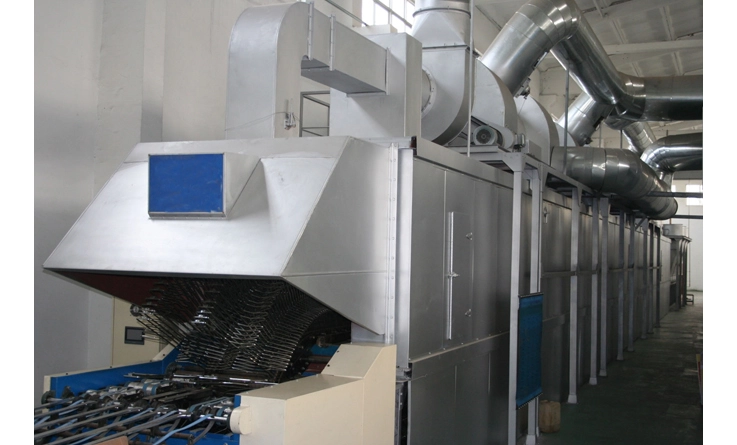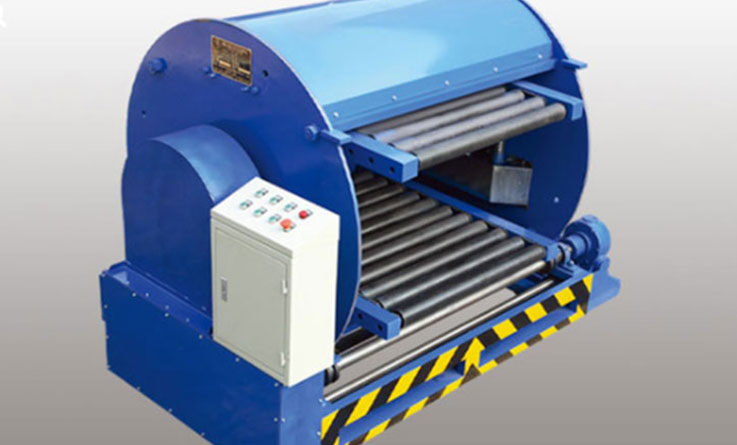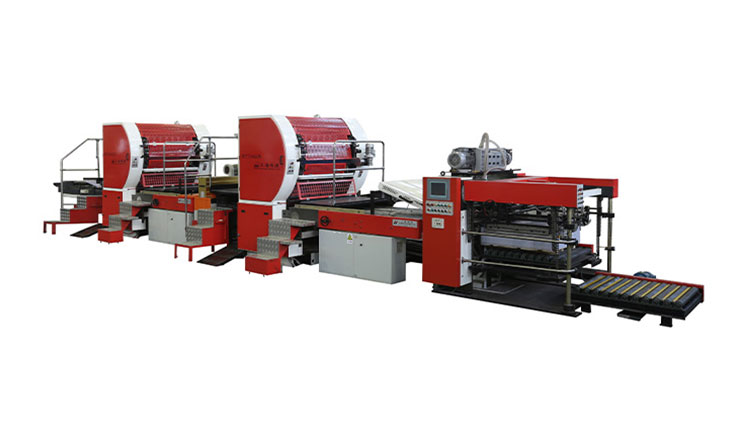The tinplate printing process is generally completed on the printing iron production line according to the above process flow. The printing iron production line is generally composed of feeding equipment, offset printing unit, coating unit, drying room and film receiving equipment. The process characteristics and requirements of each process are as follows.
1. Tinplate printing inner coating
Packaging containers made of tinplate, according to the characteristics of the contents, generally need to be coated with some kind of paint on the inner surface of the container to prevent the contents from corroding the tank wall and the contents from being polluted, which is conducive to long-term storage. For the performance of the inner coating, it must not only have corrosion resistance, good adhesion, flexibility, non-toxic, odorless, and meet the requirements of food hygiene and safety, but also must have the heating and internal repair coating parts in the post-process such as high-frequency resistance welding. High temperature heating, and high temperature cooking at 121 ℃ after canning without fading and no loss of gloss. Generally, the interior is coated with phenolic resin coating, epoxy-phenolic resin coating, acrylic resin coating and aluminum powder coating.
2. Primer and whitening for tinplate printing
Because tinplate printing products are generally printed first, and then canned, and cans need to undergo bending, stretching, welding, flanging, sealing and other processes, in addition to requiring the dry coating film and ink layer to have satisfactory strength, but also Satisfactory adhesion is required to prevent the coating film and ink layer from being deformed, cracked, or even falling off from the tinplate during the processing and forming process. Since the adhesion between the ink and the tinplate is not ideal, it is required to be between the two. Apply a layer of paint (i.e. primer) in between to improve adhesion.
Compared with printing white, white coating has iron-impermeability. It can make the pattern clearer, brighter and fuller. The common raw material for whitening is white cotin.
3. Tinplate printing plate making
The plate-making method of printing iron is the same as other plate-making methods, and there are special requirements for the characteristics of tinplate printing: in iron sheet printing, due to the non-absorptiveness of the substrate tinplate and the hardness of the iron sheet, the deformation of the dots during printing is more obvious than that of paper, especially In the shadow and midtone areas, due to the deformation of the dots, the midtone jump level becomes deeper, and the shadow tone changes and upgrades sharply. The use of square dots is more obvious, while diamond dots or circular dots, the sudden change of midtones is alleviated. Therefore, printing iron The imposition dots are all round dots or diamond dots, which is more favorable for the reproduction of the printed iron dots.
After the tinplate is printed, it needs to be processed and formed, so the welding seam edge and other reserved processing parts should be reserved during the make-up to ensure that the text pattern does not deviate from the center after processing and forming;
All welded and formed products, such as the seam edge of the printing plate of the spray can, must not have graphics, different color spots, etc., to ensure the needs of subsequent welding.
The tinplate can be printed on the machine after the inner coating and outer coating processes. Because the surface of the tinplate is bright, it does not absorb ink and has a certain hardness and thickness, so the tinplate printing generally uses offset printing. The printing principle: oil and water incompatibility, Dot conformation and color formation, selective adsorption.

 English
English français
français Deutsch
Deutsch Español
Español italiano
italiano русский
русский العربية
العربية tiếng việt
tiếng việt Türkçe
Türkçe فارسی
فارسی magyar
magyar Ελλάδα
Ελλάδα Burmese
Burmese


